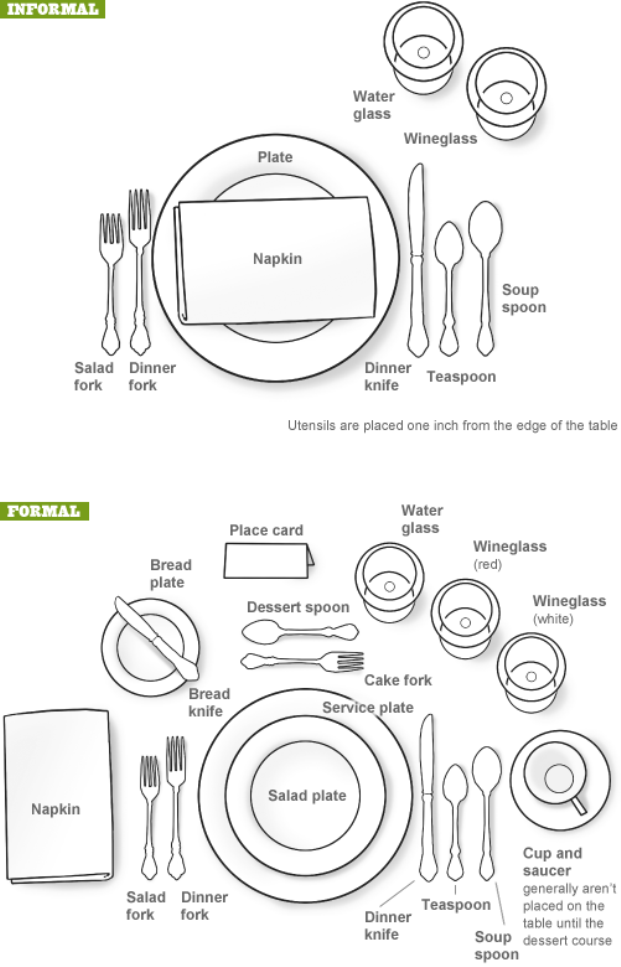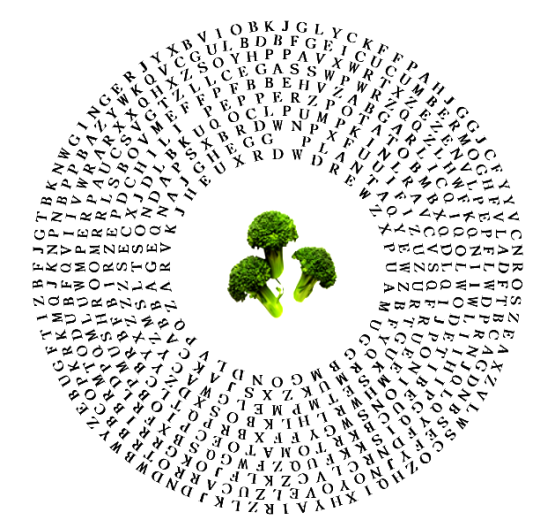Посібник з англійської мови для кухарів
ДЕРЖАВНИЙ ПРОФЕСІЙНО-ТЕХНІЧНИЙ НАВЧАЛЬНИЙ ЗАКЛАД
НІКОПОЛЬСЬКІЙ ЦЕНТР ПРОФЕСІЙНОЇ ОСВІТИ
Посібник з англійської мови
для кухарів
Лисенко М.М.

Нікополь
2016
Посібник з англійської мови для кухарів. – Нікополь: НЦПО, 2016., 73с.
Посібник розрахований на широке коло користувачів: учнів та викладачів профтехосвіти, а також усіх, хто вивчає англійську мову.
Посібник побудований на основі сучасної лексики англійської та української мов. Посібник сприятиме успішному оволодінню англійською мовою та формуванню професійних навичок кухарів, розвитку інтелектуальних здібностей.
Упорядник:
Лисенко М.М.
Рецензент - ЕсаулкоО.О. – заступник директора з НР НЦПО
Відповідальний редактор - Клопінська І.О. - методист НЦПО
Розглянуто та схвалено
на засіданні м/к суспільно-гуманітарних дисциплін
Протокол № 6 від 27.01.2016р.
Анотація
Посібник з англійської мови для кухарів призначений для організації самостійної та додаткової роботи учнів ПТНЗ, поглибленню та проведенню контролю знань з предмету «Англійська мова» по темі «Культура харчування».
Система завдань посібника доповнює та розширює систему завдань навчальних підручників і посібників з предмету «Англійська мова» по темі «Культура харчування». В посібнику подані опорні теоретичні положення теми, запитання самоконтролю знань, тестові завдання, завдання на розвиток логічного мислення.
Посібник побудований на основі сучасної лексики англійської та української мов. Також він сприятиме успішному оволодінню англійською мовою та формуванню професійних навичок кухарів, розвитку інтелектуальних здібностей.
Посібник з англійської мови для кухарів містить велику кількість ілюстрованого матеріалу, таблиць, різноманітних кросвордів, схем, що підвищує пізнавальну діяльність учнів до вивчення теми «Культура харчування» та якість знань, допомагає учням краще засвоїти і закріпити вивчений матеріал.
Посібник розрахований на широке коло користувачів: викладачів профтехосвіти та учнів, що опановують професію: 5122 «Кухар», а також усіх, хто вивчає англійську мову.
Зміст
Lesson 1……………………………………………………….………………….5
Lesson 2………………………………………………………..……..………...10
Lesson 3……………………………………………………………….………..13
Lesson 4…………………………………………………………….…………..16
Lesson 5……………………………………………………………….………..20
Lesson 6……………………………………………………………….………..22
Lesson 7………………………………………………………………….……..24
Додатки………………………………………………………………………..27
Словник……………………………………………………………………….61
Використана література……………………………………………………73
Передмова
Даний посібник призначений для учнів І та ІІ курсів за професією «Кухар». В ньому представлені завдання професійного змісту. Посібник складається з 7 уроків: Lesson 1: How to lay a cover; Lesson 2: Meals in England; Lesson 3: Dinner at the restaurant; Lesson 4: The Menu; Lesson 5: Methods of Cooking; Lesson 6: Styles of food service; Lesson 7: At the bar.
Після уроків йдуть додатки, які складаються з великої кількості ілюстрованого матеріалу, схем, тестів, таблиць та різноманітних кросвордів.
Для зручної роботи підручник також має словник побудований на основі сучасної лексики англійської та української мов.
Робота над завданнями професійного змісту сприятиме закріпленню здобутих знань, формуванню інтересу до англійської мови та обраної професії.
Автор посібника сподівається, що запропонований матеріал стане в нагоді викладачам англійської мови ПТНЗ.
Lesson 1
How to lay a cover
When you lay a cover you need the following cutlery and tableware:
- main knife and fork
- fish knife and fork
- soup spoon
- side knife
- glassware
- napkin.
Rules of setting a table:
- Put the cutlery, crickery and glasses on the table before the guests come.
- Wipe and polish all cutlery and glassware before you put them on the table.
- Put the main knife and fork 1 cm from the edge of the table.
- Put the side plates at the left side.
- Put the side knives on the side plates.
- The blades of all knives must face left.
- Put the wine glasses in front of the main knife.
- Put a folded napkin in the centre of the side plate or at the right side of the cutlery.
- A vase for flowers, cruets-sets and an ashtray are in the centre of the table.
Answer the questions:
- Do we set the table before the guests arrive?
- What do we do with cutlery, crockery and glassware before we put them on the table?
- Where do we put the main knife and fork?
- Where do we put side plates?
- Where do we put side knives?
- Where do we put wine glasses?
- Where do we put a folded napkin?
- Where do we put flowers, cruets-sets and an ashtray?
The table manners
Questions before reading:
Speak about the table manners you should observe in your homes or in the public cafeteria. What do you do before eating? Are there rules about your hands or the way you sit? What do you do at the end of a meal? Why do we have rules about how to eat? Have you ever been in situations where the rules you are used to are not appropriate?
Different Countries, Different Etiquette
Whether one is travelling for business or for pleasure, new cultures are generally part of the process. Although there are many differences between cultures in the world, there are also similarities. The similarities do not get us into trouble, but the differences can destroy a business deal or a pleasure trip. Learning some facts and some of the patterns of other cultures, as well as various travel customs and tips, can help you be successful.
France
In a country where food is king it's good to have courtly manner. So:
Don't cut your salad with a knife or fork. Instead fold your salad on your fork using your knife.
Never cut bread. Break bread with your fingers. And usually there aren't bread/butter plates. So place your bread on the table above your dinner plate on the left.
Cut cheese vertically. Do not cut off the points.
Never eat fruit whole – Always peel and slice it before eating.
When you're finished eating, place knife and fork side by side on the plate at the 5:20 position. The fork should be on the left and the knife should be on the right with the blade of the knife facing the fork.
To signify that you would like more food, cross your knife and fork across your plate.
Italy
Italians are known for expressing themselves through body language. So:
Greet friends with a kiss on both cheeks.
Keep eye contact while talking. If not, Italians think you are hiding something.
To call a waiter or waitress, raise your index finger and make eye contact.
Stand when an older person enters the room.
China
In China, it's all about respect. So:
When introduced to a group of Chinese people, they may greet you with applause. Be sure to applaud back.
Greet the oldest, most senior person first.
Address the Chinese by Mr., Mrs., Miss plus family name.
The Chinese dislike being touched by strangers. Other than shaking hands when greeting them, do not hug, lock arms or make any other body contact.
Argentina
Always fashion-conscious. So:
Dress well if you want to make a good impression.
Women are expected to dress stylishly.
And don't be offended by their humor, which may mildly attack your clothing or weight.
Questions after reading:
- What are the differences and similarities between the table etiquette in your country and the countries that you have read about?
- What are some mealtime habits or rules in your home that a visitor from one of these countries may find unusual? What could you do to make your visitor feel comfortable?
- How did you learn what behavior is appropriate at mealtime?
- Why are rules of etiquette so important? Whose rules do you follow when you're sharing a meal at someone's house? Whose rules do you follow in a restaurant?
Lead-in: Imagine you are going to visit some country. Choose any country you like. What would you do before you go there? (find some info on the Internet about culture, food, history, holidays, people, good manners – what you CAN and CAN’T do)
Table manners in Ukraine:
- DO partake in toasts. Toasting is a very important part of Ukraine's social culture.
- DO be prepared with an excuse if you don't drink. If you don't drink alcohol, blame it on an medical problem. Ukrainians can sometimes be suspicious of people who don't drink.
- DON'T clink glasses during a toast if you aren't drinking alcohol.
- DON'T eat until the host invites you to begin.
- DO rest your wrists at the edge of the table.
- DON'T refuse a dish. Try everything and save room for seconds. Turning down food could be seen as rude.
- DON'T leave an empty bottle on a table. It's considered bad luck.
- Put your napkin on your lap when the food is served. After you have finished eating wipe your hands and mouth with the napkin and then put it on the table on the left of your plate. Don’t fold it, don’t wipe your face with it.
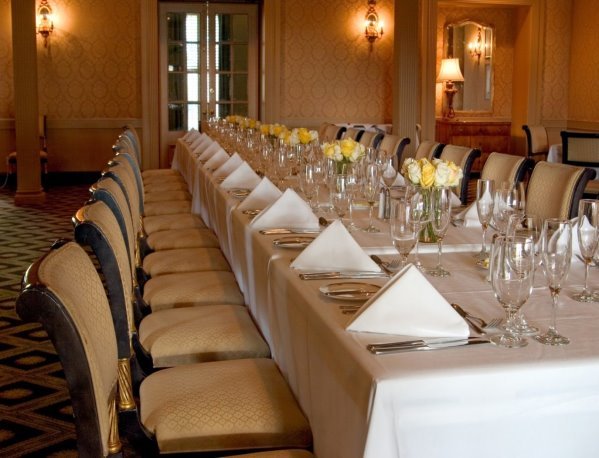
Lesson 2
Meals in England
The usual meals in England are breakfast in the morning, lunch at one o’clock during the break at work and dinner at home at seven or eight o’clock in the evening. Sometimes the meals are breakfast, lunch traditional five o’clock tea, dinner and late supper.
English breakfast is usually substantial and varied. For breakfast English people may have porridge or cornflakes with milk or cream and sugar, bacon and eggs, fried mushrooms, marmalade with buttered toast and egg, cold ham, or fish with potato chips.
Those people who work usually have lunch about one o’clock. For lunch they may have a mutton chop, or fish and chips, or cold meat, or steak with fried potatoes and salad and fruit dessert. Working people usually have their lunch at the canteen or in the nearest café or a small restaurant.
Afternoon tea at home is between five and six o’clock. Five o’clock tea is an old English tradition. Friends often come for a chat while they have their cup of tea, cake or biscuit.
In many English families dinner is the biggest meal of the day and in the evening there is usually a much simpler supper - an omelet or sausages, or sometimes bacon and eggs. For late supper they may have just bread and cheese, a glass of juice or hot chocolate and fruit.
Answer the questions:
- What are the usual meals in England?
- Is English breakfast substantial and varied?
- What may English people have for breakfast?
- When do people who work usually have lunch?
- Where do working people usually have their lunch?
- Is five o’clock tea an old English tradition?
- What can be served for five o’clock tea?
Translate into English:
1. Англійський сніданок зазвичай щільний і різноманітний.
2. Люди, які працюють, зазвичай обідають у їдальні або в найближчому кафе або ресторані.
3. На сніданок у англійців може бути вівсяна каша або кукурудзяні пластівці з молоком, яєчня з беконом, чай або кава.
4. Чай в 5:00 - стара англійська традиція.
5. Пізня вечеря зазвичай легка. Це може бути хліб і сир, стакан соку або какао і фрукти.
Read and translate into Ukrainian.
Breakfast at the restaurant
1st Guest: Let’s call a waiter and make the orders.
Waiter: What can I do for you?
1stGuest: Breakfast for two, please.
Waiter: What would you like for breakfast? Today we’ve got a big choice of dishes.
1st Guest: Will you bring us something substantial to your taste?
Waiter: Here is the menu. Make your choice, please.
1st Guest: I’d rather have pancakes, bacon and eggs and a cup of coffee.
Waiter: How would you like your coffee?
1st Guest: Not very strong and put two lumps of sugar in it, please.
Waiter (to the second guest): What would you like for breakfast?
2nd Guest: I’d like fried eggs, meat pate and toasts with marmalade. Then bring me a fruit salad and some fruit juice, please.
Waiter: What juice would you like?
2nd Guest: Orange juice, please.
Waiter: Anything else?
2nd Guest: No, that’s all.
Waiter: Just a minute, it won’t take long.
(After the breakfast.)
1st Guest: How much do we pay?
Waiter: Here’s your bill, please.
1st Guest (paying for the breakfast): Here you are. Keep the change, please.
Waiter: Thank you, sir! Come again, please.
Make a dialogue.
![]() Guest: I usually take two lumps of sugar and have my coffee with milk.
Guest: I usually take two lumps of sugar and have my coffee with milk.
Guest: Well, I’ll have some bread and butter or some buttered toast, eggs and bacon and cornflakes with milk.
Guest: You see, I didn’t want to take a substantial breakfast but today I’d like to taste your sandwiches with cheese. I see you have sandwiches with cheese on the menu. What kind of cheese is that?
Guest: In the morning I prefer a cup of strong coffee?
Waiter: How many lumps of sugar do you take in your coffee? Do you take milk with your coffee?
Waiter: What else would you like to order?
Waiter: Good morning! What would you like for breakfast?
Waiter: Any kind you like. We have sharp, piquant cheeses – Roquefort and Cheddar, mellow cheeses – Swiss and Cheshire, and soft cheeses – Edam, Camembert and Brie.
Waiter: What would you like, tea or coffee?
Make some sentences.
Ви збираєтеся зробити замовлення в ресторані. Щоб ви замовили собі на сніданок?
Example: For breakfast I’d like to have …
yogurt
pancakes with sour cream
omelet
pudding
fried eggs
boiled eggs
cottage cheese
bacon
strong tea coffee
sausage
apple pie
liver pate
cake
butter
strawberry jam
orange marmalade
cocoa (hot chocolate)
milk
cornflakes with milk
sandwiches with cheese
Lesson 3
Dinner at the restaurant
Usually I have my dinner at home but last Sunday my friend invited me to have dinner at the restaurant. When we came in the headwaiter showed us to the table. We sat down at the table and the waiter gave us the menu. The table was already laid for dinner. There was a white table-cloth on the table, plates, spoons, knives and forks on it. In the middle of the table there was a dish with white and brown bread, a cruet-set with a salt-cellar and pots for pepper and mustard.
We decided to begin with some kind of appetizer or hors-d’oeuvre. My friend ordered clear chicken soup with noodles and I chose cabbage soup with small meat pies.
For the second course there was a wide choice of dishes: fried fish and chips, pancakes with salmon, scallops fried in vegetable oil, veal cutlets, pork chops with fried potatoes, steaks and grilled chicken. The waiter suggested us for the second course the specialty of the restaurant – pan-fried veal chops with spring onions.
For dessert we decided to take vanilla ice cream, coffee and apple pie.
Everything was very tasty and the service was good. The waiter brought us a bill. We paid the bill and left the restaurant.
Answer the questions:
- When did my friend invite me to have dinner?
- Was the table laid for dinner already?
- What was there on the table?
- What was there in the middle of the table?
- What did we decide to begin dinner with?
- What did my friend order?
- What was on the menu for the second course?
- What did the waiter suggest us for the second course?
- What did we decide to take for dessert?
Make dialogue: Eating out
Tom: Good Evening. What would you recommend for dinner?
Hi. Can I have a hamburger, please?
Tom: That sounds good. I’ll take it.
Some ketchup and a pickle, please.
Tom: Fine. I’ll have that.
No. That’ll be all.
Tom: No. But do you have potatoes or rice?
Tom: Give me a diet lemonade.
Waiter: Sure, what do you want on it?
The fish is excellent. It’s flounder, and it’s very fresh.
Waiter: Would you like a vegetable also?
We have carrots and spinach.
O.K. Do you want anything to drink?
Waiter: That’ll be two-fifty.
Good. I’ll have everything for you in a few minutes.
Waiter: We have rice this evening.
Waiter: All Right. Anything else?
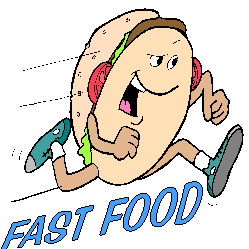 Fast food or Traditional food?
Fast food or Traditional food?
It’s Ok to eat fast food occasionally but fast food is high in calories. So, if you often eat a hamburger and chips you can easily become obese. You must eat homemade food because it is healthier.
Everybody knows that fast food is cheap and quick. However fast food is not as tasty as homemade food. Young people prefer to eat pizzas, hamburgers and French fries but they should eat soup instead. Fast food companies spend lots of money to make people believe that fast food is cool. The average American eats three hamburgers with French fries a week. Is it surprising that 14% of American teenagers are obese? Health care is devoted to create new eating habits so that we can have a healthier generation.
Obesity can lead to other diseases such as diabetes and heart strokes. This is why America is now starting to fight back against the fast food companies. They are stopping serving fast food in school cafeterias and restaurants serving traditional food are opening now.
Read the text and find evidence for the following statements.
- There is no problem if you eat fast food now and then.
- You can get fatter if you eat hamburgers and chips frequently.
- Fast food is not expensive.
- Fast food is easily made and eaten.
- Advertisements convince people to eat fast food.
- Three hamburgers with French fries a week is the percentage of the American consumer.
- About a quarter of American teenagers are very fat.
- Being fat can cause several diseases.
- There is a campaign against fast food.
- Schools and other places are not going to sell fast food in the future.
Lesson 4
The Menu
The word menu means:
- The dishes served in this restaurant
- The list of dishes and vines. It is usually printed in the form of a card and each guest receives a copy of the menu. In popular restaurants there are one or two big menus on blackboards.
The structure of the menu
The classical French menu has more than twelve courses. Modern menus usually have:
- Appetizers or snacks
- Soups
- Entrees
- Main courses
- Desserts.
Many restaurants call the first three courses “starters”.
- Appetizers can be hors-d’oeuvre, pates, or natural oysters. These dishes are usually cold. They stimulate the appetite and are served at the beginning of the meal.
- Soups may be thick potage or thin consommé. Soups are usually served hot, but can be served cold.
- The entrée in the classical French menu is a course served between the fish and the main meat courses. In the modern menu it can be seafood dishes, salads, small fried sausages or fish.
- The main course is the most substantial course of the meal. Guests usually choose their main courses first and then select other courses. When chefs design menus, they usually start with the main course and then plan the other courses.
- Dessert is the sweet course at the end of a meal or before coffee. In Britain it can be fruit and nuts, or a pudding. Coffee can be served with chocolates, biscuits or fruits.
Answer the questions:
- How many courses are there in a modern menu?
- What are starters?
- When are the appetizers served?
- What kinds of soups do you know?
- When are the entrees served?
- What is the main course?
- What is dessert? What can be served for dessert?
-
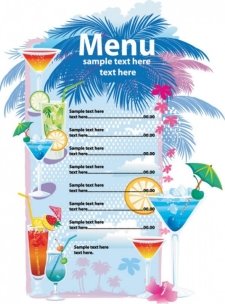 When is coffee served?
When is coffee served?
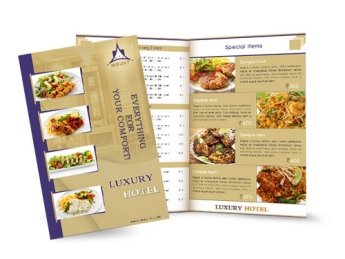
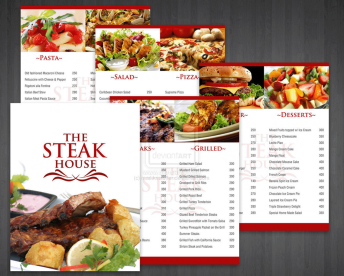
TYPES OF MENUS
Most menus consist of courses, or parts of the dinner, which are served in a certain order. First small, light dishes (appetizers) are served, then the main part of the meal is served and at the end of a meal a dessert is served.
There are four basic types of menus:
- a la carte menu
- table d’hote menu
- carte du jour
- cycle menu
A la carte menu
A la carte means dishes «according to the card». This menu allows the customer to choose the number and type of dishes. This menu has a list of all the dishes, arranged in courses and each dish has its price. The dishes are «cooked to order», so the guests must wait a little until the dish is ready, and then the dish is served to the guests.
Table d’hote menu.
Table d’hote means «host’s table». It usually offers a limited choice of dishes. Three or four dishes are offered in each course and the guest pays a fixed price for the whole meal.
In «business lunch», for example, there are only three or four dishes in each course and the guest pays a fixed price for the whole meal.
Carte du jour.
Carte du jour means «card of the day». The dishes in this menu are served on this day only.
Cycle menu
A cycle menu is a group of menus, which are repeated in a certain cycle. Cycle menus are usually used in hospitals, on airlines and in works canteens. The dishes in the main course are new every day.
Answer the questions:
- What are the five courses most commonly found on a modern menu?
- Why are hors-d’oeuvres usually small?
- What are the main course of dishes?
- What is the French name for a thin soup?
- What is the French name for a thick soup?
- Which course on a menu do guests usually choose first?
- What can be served for desert?
- What is a la carte menu?
- What is a table d’hote menu?
- What does carte du jour mean in English?
- Where is cycle menu usually used?
Перекладіть на англійську
- Більшість меню складається зі страв та напоїв, які подаються в певному порядку.
- Спочатку подаються легкі страви, потім основні страви, і в кінці обіду подається десерт.
- Страви в меню a la carte готуються на замовлення.
- Меню a table d’hote зазвичай пропонує обмежений вибір страв.
- Страви в меню carte du jour подаються тільки в цей день.
- Циклічне меню зазвичай використовується в лікарнях, на авіалініях і в їдальнях на заводах.
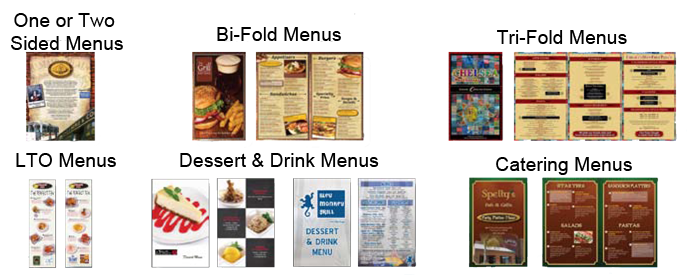
Lesson 5
METHODS OF COOKING
Cooking is a heat treatment of food to make it edible. Many products cannot be eaten raw. Meat, fish and vegetables are usually cooked. Some fruits are not cooked, but some, such as apples, pears, and currants, may be used in pies or to make desserts. Fruits are also cooked to make jams, jellies, and marmalades.
The four basic ways to cook food are:
- Heating in a liquid (boiling, stewing)
- Heating in fat or oil (frying and sautéing)
- Heating in steam (steaming)
- Heating by dry heat (baking, roasting and grilling).
Boiling. We may boil food in different liquids and mixtures, including water, stock, and wine. Meat, poultry, many vegetables and spaghetti are cooked this way.
Stewing is cooking food slowly in liquid. It is often used for meat. Vegetables, herbs, and spices are usually added at the end of cooking.
Deep-frying is immersion of food in hot fat or oil. Chipped potatoes and doughnuts are the best example of deep-frying. Deep-fried foods are called fritters.
Shallow frying is frying on a pan in hot fat or oil, when the food is fried on both sides. We can fry eggs, meat, vegetables, mushrooms, onions and pancakes.
Sautéing is frying when natural juices of the food are mixed with the fat or oil in the saucepan. We can also add stock, wine or cream. As a result we obtain a dish with a sauce.
Steaming is a method of cooking above the surface of boiling liquid in a covered saucepan. Fish, vegetables, and poultry are especially suitable for steaming, as are some types of puddings.
Baking is dry cooking inside an oven. Bread, cakes, pastries, tarts and biscuits are baked. Vegetables, especially potatoes, may also be cooked in this way.
Roasting is cooking meat and poultry, which are placed in an oven and cooked by dry heat. They are often basted, that is, the juices from the meat are spooned over during the process. Some cooks wrap the meat in a roasting foil with a little oil or melted fat. Meat can be also roasted on a spit.
Grilling is a rapid method of cooking poultry, fish, cuts of meat, sausages and kebabs by heat, the source of which may be gas, electricity, or charcoal.
Answer the questions:
- What are the four basic ways to cook food?
- What is cooked by boiling?
- What two methods of frying do you know?
- What can be baked?
- What do we usually roast?
- How do we call frying when natural juices of the food are mixed with the fat or oil in the saucepan?
- How we are potato chips cooked?
- How are beefsteaks cooked?
- How are spaghetti cooked?
- How are doughnuts cooked?
Перекладіть на англійську
- Тушковане м'ясо; варені овочі; смажена яловичина; печена картопля; курка гриль; смажені у фритюрі страви; смажений на рожні шашлик; варена курка; поливати зверху жиром; загортати у фольгу; запікати тістечка; смажити в олії.
- Ми готуємо піцу; ми варимо; смажимо на сковороді; печемо; тушкуємо в каструлі на повільному вогні; варимо на пару.
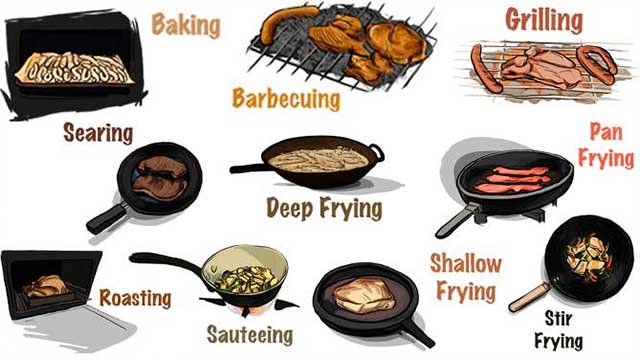
Lesson 6
STYLES OF FOOD SERVICE
There are many types of catering establishments. They are big first class restaurants in five-star hotels, small restaurants, cafeterias, snack bars and fast food restaurants. They serve different types of customers. They are families, groups of tourists, business people, children etc. They all demand different styles of service. There are various basic styles of food service in restaurants of different types. The most common styles are:
Buffet service
Buffet service is often called “Swedish Board”. This system of food service is very convenient for the guests – they needn’t wait for the waiters and bills. This is really self-service. Breakfast is served from 8 to 10, lunch from 12 to 15, dinner from 18 to 20. As a rule this type of food service is arranged in hotels for big group of tourists, and also for conferences and congresses.
The counters with snacks and dishes, and snack-plates and trays for taking food are placed in the center of the dining hall. The tables are near the walls. The guests come up to Swedish Board and put the meals, appetizers and salads on the snack-plates themselves. Then they put everything on the trays and take their seats at the tables.
The assortment of appetizers, dishes and beverages is usually rich. The guests can taste a little of each dish. Desserts are usually placed on a separate table. The waiter’s role is to cleat the tables and serve drinks. The waiters can also help the guests if necessary.
Cafeteria service
In cafeteria service the guests collect their plates with dishes on a tray as they move along the counter. At the end of the counter there is a cash desk. There the customers pay for the dishes they have chosen. This kind of service is usually used in cafeterias, snack bars and canteens.
Plate service
This is the simplest form of table service in the restaurants. All the food is put on the plates in the kitchen. The waiters take it and place on the table in front of the guests. The principal item in the dash should be put nearest to the customer, and the garnish and vegetables should be arranged around the main item.
Answer the questions:
- What are the types of catering establishments?
- What are the types of customers?
- Is the “Swedish Board” convenient for the guests?
- What groups of people usually use the “Swedish Board”?
- Where are the counters with snacks and dishes placed in “Swedish Board”
- Where are the desserts placed in the “Swedish Board”?
- What is the waiter’s role in the “Swedish Board”?
- Where is cafeteria service used?
- Where do the customers pay for the dishes in cafeteria service?
- What is plate service at the restaurants?
Перекладіть на англійську
- На різних підприємствах харчування різні стилі обслуговування, тому що вони обслуговують різні типи клієнтів.
- Самообслуговування «Шведський стіл» дуже зручно для гостей, вони не повинні чекати офіціантів і рахунок.
- «Шведський стіл» використовується для великих груп туристів, а також для конференцій і конгресів.
- Асортимент закусок, страв і напоїв зазвичай багатий. Гості можуть спробувати всі страви.
- Офіціанти можуть допомагати гостям якщо необхідно.
-
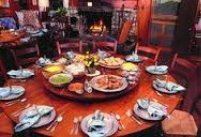
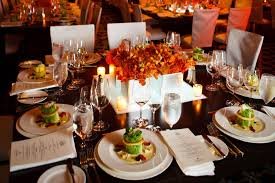
-
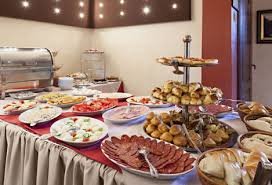
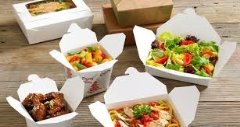
Lesson 7
AT THE BAR
A bar is the place where you can have a cup of coffee with a sandwich or a cold snack. If you want to have a drink you can order a cocktail or a glass of beer. You can also order rum, wine, liqueurs, whisky and vodka. They also serve cooling beverages, juices, fruit cocktails, ice cream, pastry, sweets, chocolates, cigarettes and fruit.
The barman is standing behind the bar counter. He serves his customers who sit at the counter on high stools in front him. They drink cocktails and coffee. Some visitors sit in comfortable armchairs at the tables. They drink cocktails, fruit juices, soda and beer. Some visitors drink coffee with sandwiches and eat ice cream.
Barmen make cocktails to order. They make aperitifs, digestives and original cocktails. Aperitif cocktails are served before the meal. They are: “Manhattan” with a cherry on the bottom and “Cinzano”. These cocktails improve the appetite. They are rather strong and are made with gin, vodka, whisky and rum. Some of them are made with vermouth or port.
The digestives are served after the meal. They help to digest food.
The original cocktails can be layered. They have several layers of spirits of different colour.
There are a lot of recipes of dessert cocktails. They called bowls, cobblers, fizzes, highballs and sour. They are long drinks and people drink these cocktails using straws. When you drink “through a straw” it’s called “a long drink”, when you drink at a gulp – “a shot drink”. Cobblers are made with ice and are decorated with fruits: lemons, oranges and berries. Fizzers are made with sparkling wine (for example, champagne) or sodas. Highballs are served in high glasses. They are a mixture of two ingredients: strong drinks, such as whiskey or vodka, and some soda. “Sour” cocktails have much lemon juice in them.
Come to the grill-bar where you can taste kebabs or shashliks (pieces of mutton roasted on a spit), grilled sausages, grilled fish, grilled chicken, beefsteaks. There you can also have coffee and beverages.
In the beer bars they sell bottled and draught beer, mineral and fruit water. They usually have no strong drinks on sale. You can order beer of any kind you like. For a snack you can take potato chips, biscuits, salted, nuts, olives, shrimps, cheese and fish snacks of smoked, dried and salted fish. You can also have sandwiches, cold and hot snacks in the beer bar.
You can find Express-Bars in the shopping centers, hotels and at the railway stations. Their aim is to serve the customers as quick as possible. They serve coffee and tea, sandwiches, baked items, pastry and milk products.
In the evening you can go to a Disco-bar. The halls in Disco-bars are specially decorated and have special devices producing light effects. People come to these bars to dance, to listen to the music, to see the performance and to have a good time. Disco-bars usually have the menu with snacks, sandwiches, cooling and mixed drinks. For dessert the guests can have ice cream and fresh fruit.
Act dialoges:
![]()
![]()
![]()
- Good evening! I’m at your service. What can I do for you?
- I’d like to have a drink before the meal. Can I have some aperitif cocktail? What would you recommend?
- I’d recommend Martini.
- Then one Martini and a pack of Marlboro, please.
- Very good, sir! I’ll serve you in a moment. Here is your Martini and cigarettes.
- Here is the money. Keep the change.
-


 Thank you very much. Come again to our bar, please.
Thank you very much. Come again to our bar, please.
|
– Good evening! What would you like?
– Goodevening! What would you like?
|
|
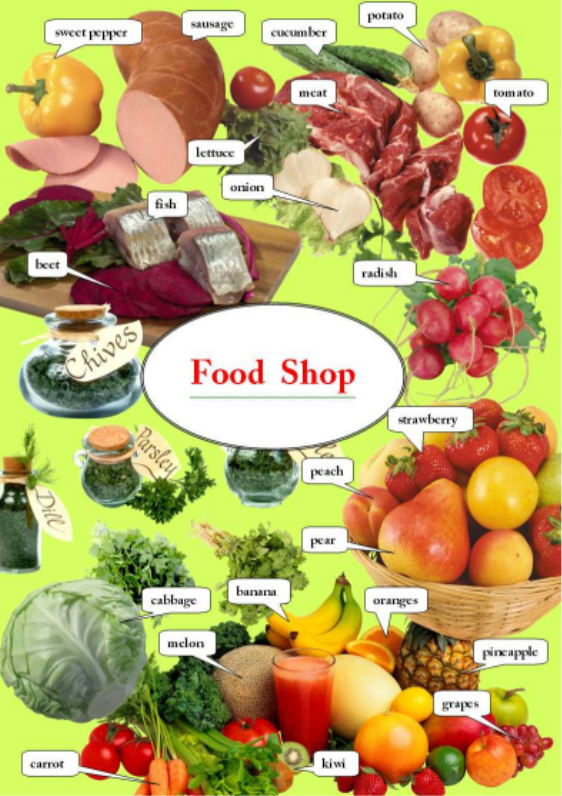
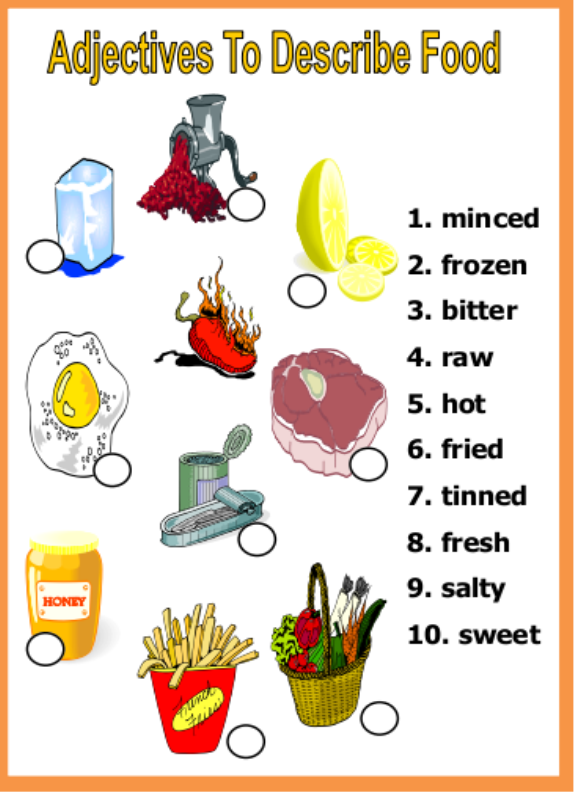
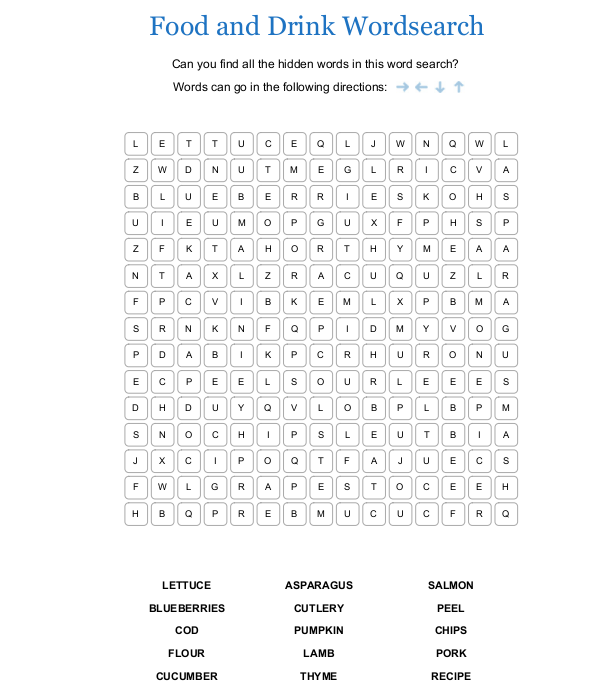

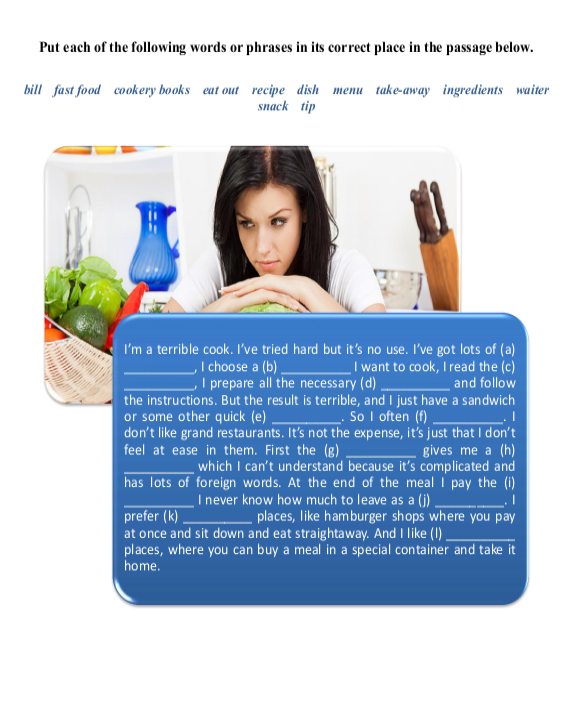
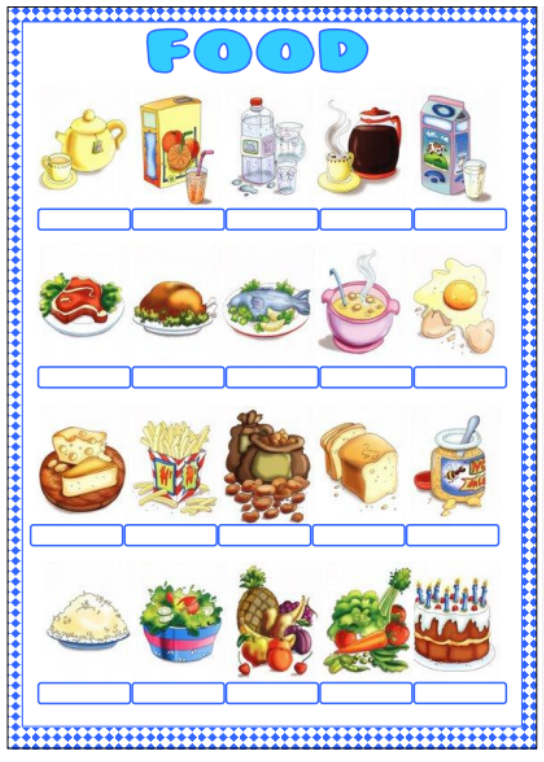
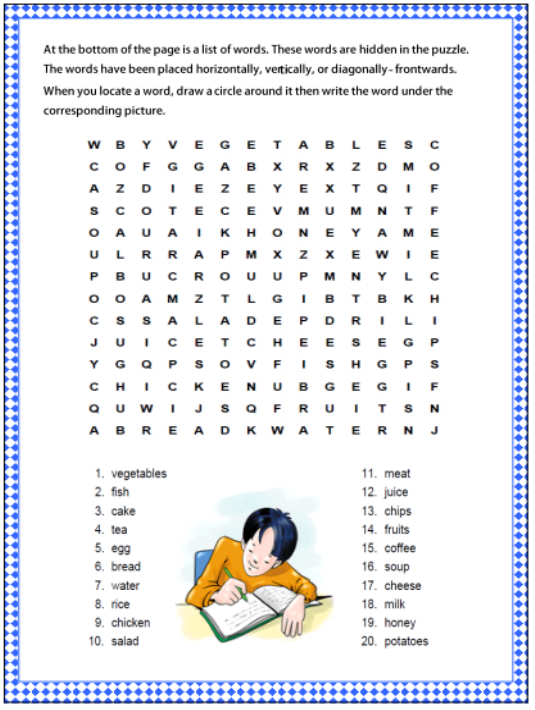

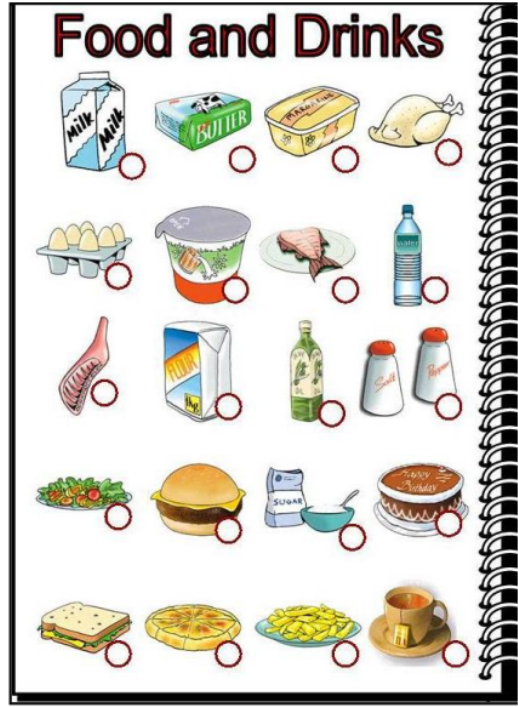
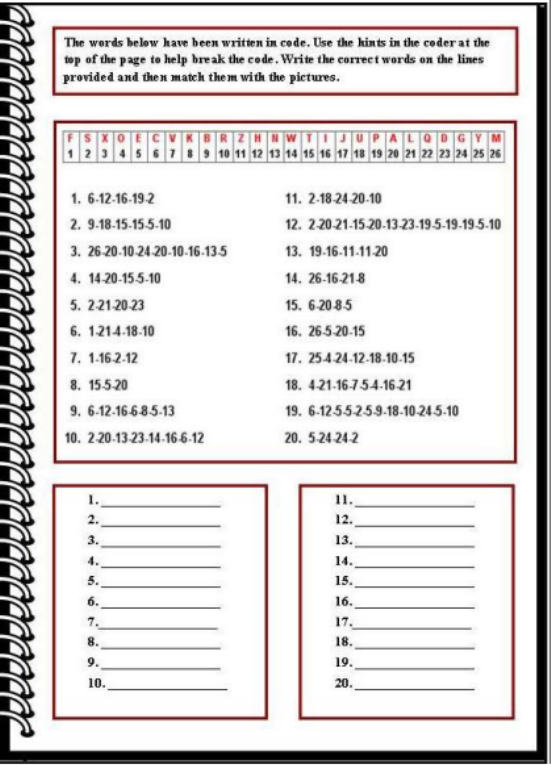
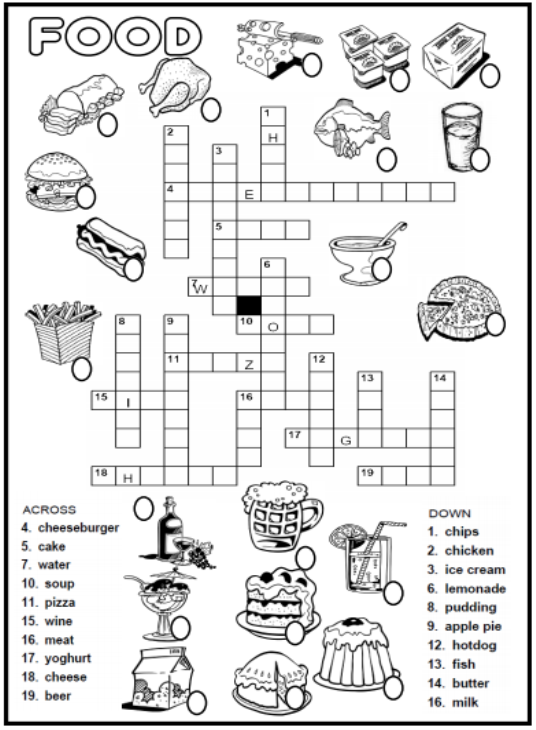
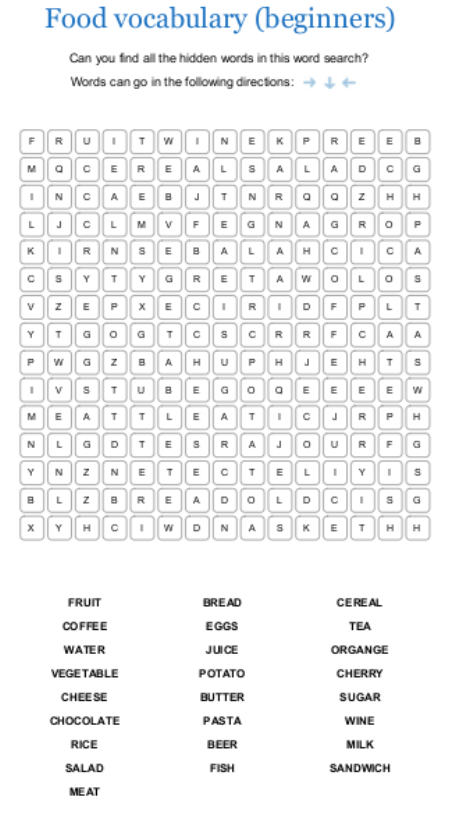
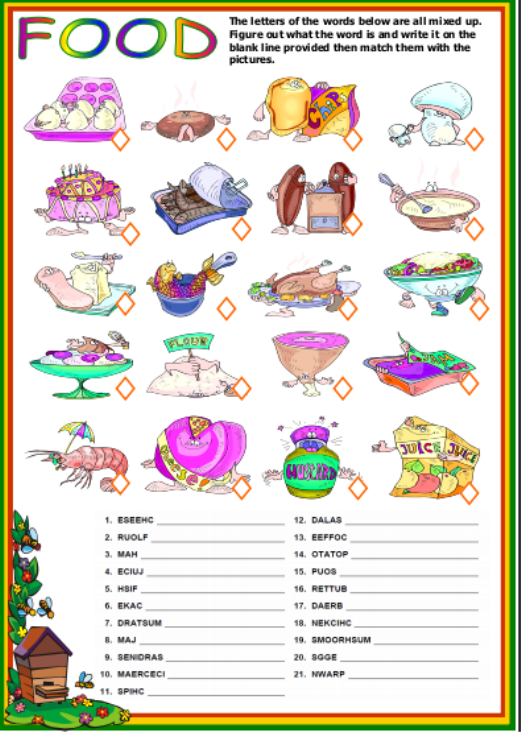
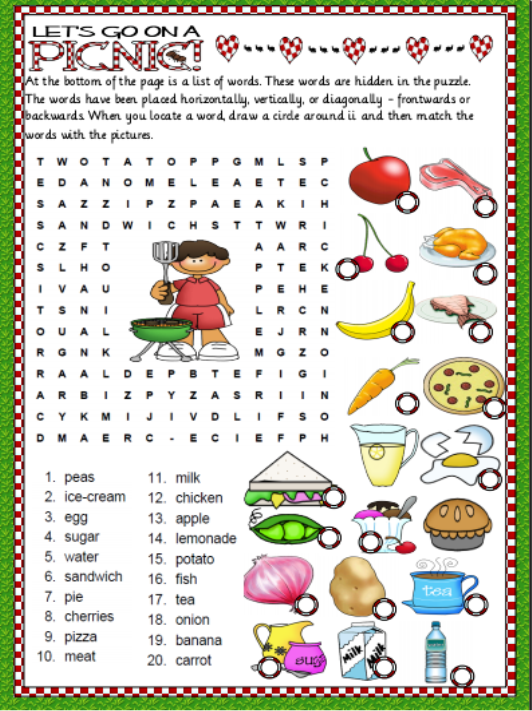
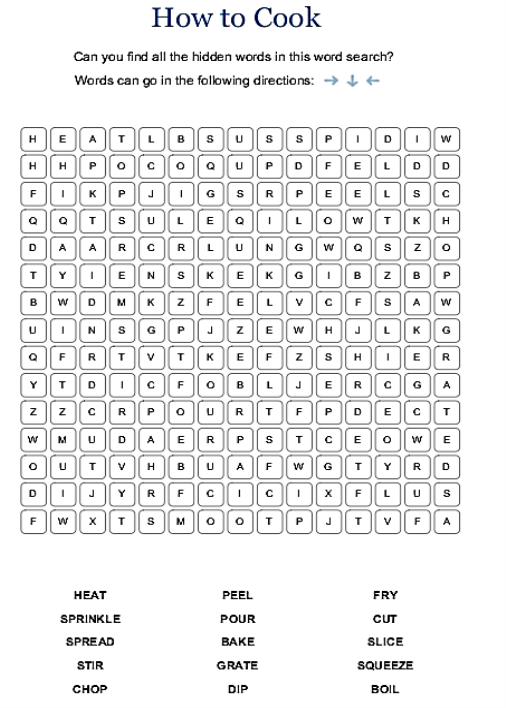

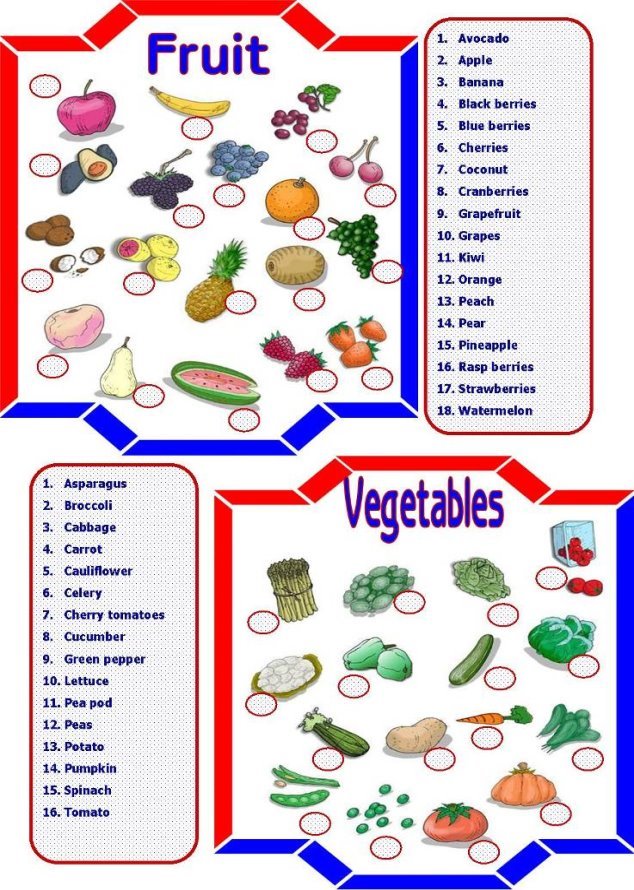
Find 40 Kitchen Utensils and Appliances.
The words are hidden in the puzzle.
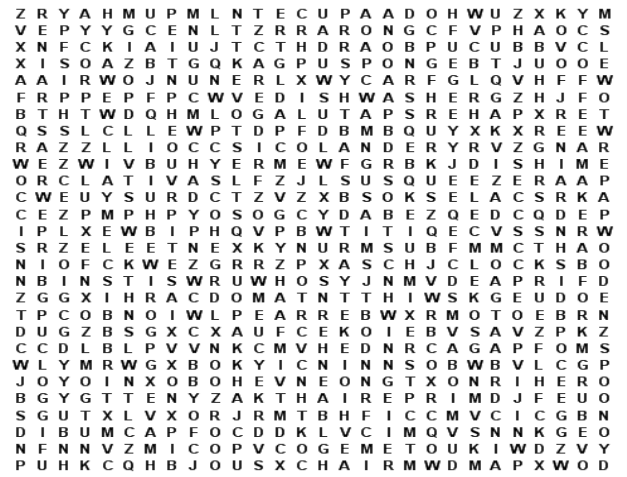
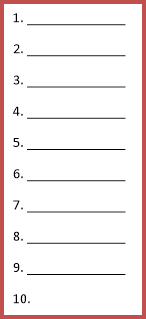
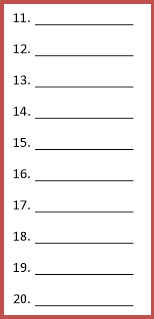
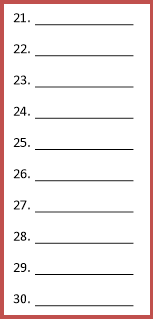
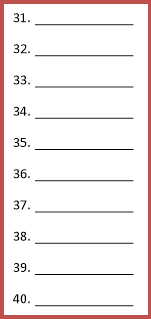
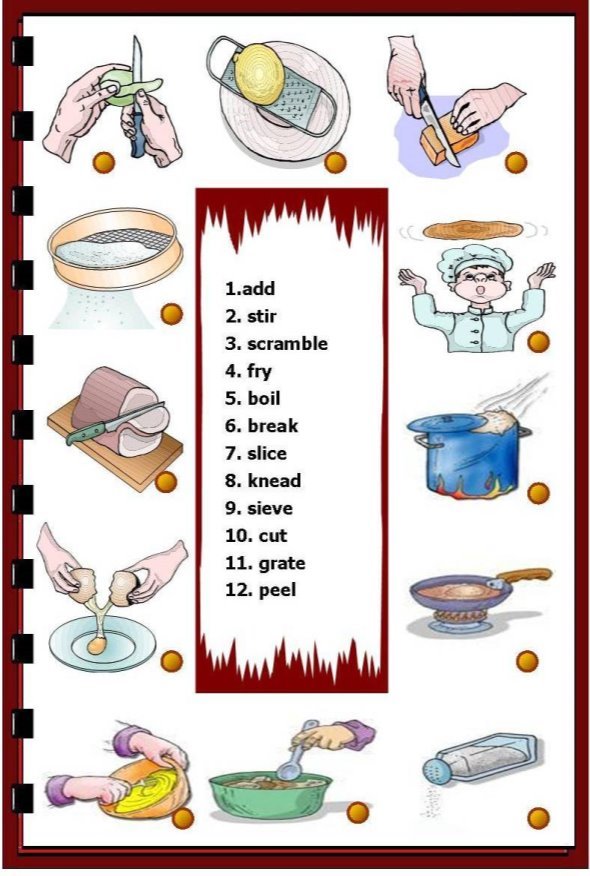
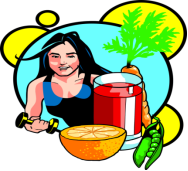

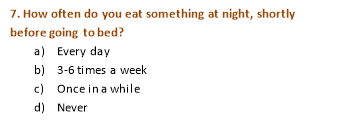
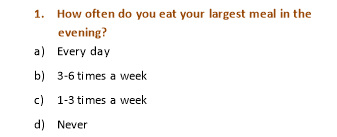
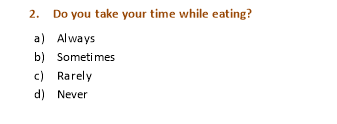
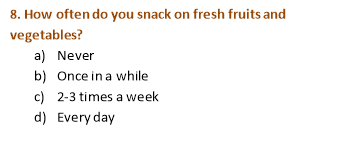


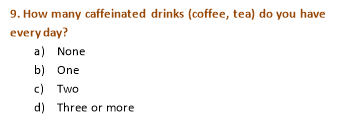
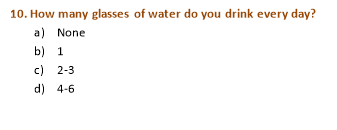
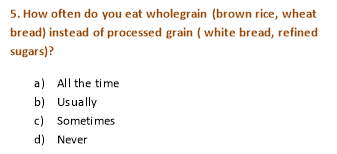

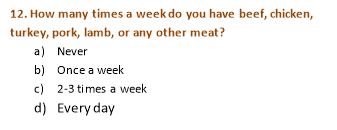
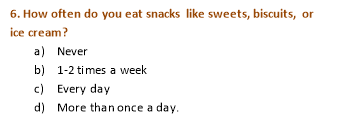
|
1
2
3
4
5
6
7
8
9
10
|
11
12
0-15: You are what you eat – so be careful! Your body works hard to get you through each day. And what does it get in return? An unhealthy diet loaded with fatty foods, like hot dogs and milk shakes and crunchy, cheesy things that come in big, noisy bags. You make your diet healthy or unhealthy by the choices you make at every meal. For what you answered above, you don’t really treat your body with the respect and moderation it deserves. There’s lots of room for improvement, and it will help you feel better.
16-30: You are what you eat – and it’s all pretty good. Of course, sandwiches, French fries and coke aren’t the best way to get healthy! But most of the time you treat your body with respect and moderation. Nevertheless, there’s still some room for improvement.
31-36: You are what you eat! – and it’s all good! You treat your body with respect and moderation. A healthy diet is packed with fruits and vegetables and grains like rice, pasta and bread. You ‘re definitely an A+ eater. |
Tom goes to eat breakfast
Tom wants to eat breakfast. He goes to the restaurant. He is hungry. He orders a slice of pizza, a cup of tea and a carton of milk. The waiter asks Tom if he wants something else. Tom says, he wants a piece of cheese and a bowl of soup. Tom eats all his food and pays the bill. He is full now. He goes to work.
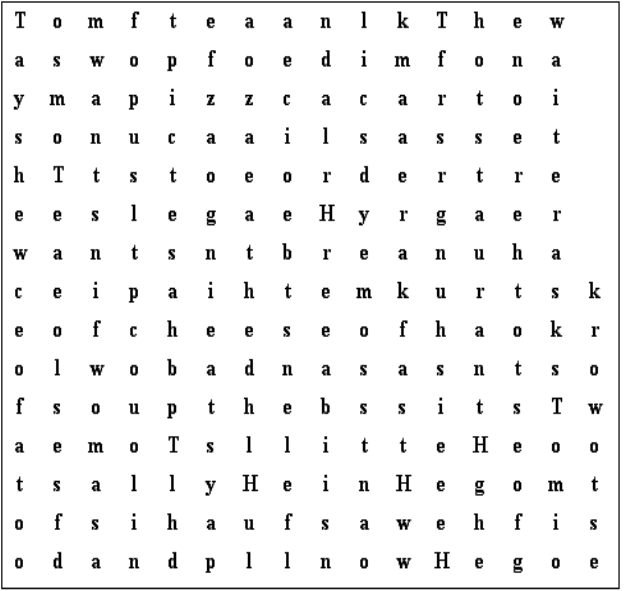
Vegetables: Unscramble the vocabulary words in the list below, then circle or highlight each of the matching words hidden in the rings of the puzzle.
|
abbegac____________ oarctr_____________ cipepreihlp__________ cuembcur___________ egnlagpt____________
|
eingrg______________ muoroshm___________ nnioso______________ totpoa______________ kmpniup____________ tomtoa_____________
|
Chocolate is good for you
A study carried (1) ____ in Germany has found that chocolate may be good for your heart. This is fantastic news for all chocolate lovers. The extensive research was conducted (2) ____ eight years. The research team followed the chocolate-eating habits and health of almost 20,000 people. They compared how much chocolate was in their (3) ____ to the number of heart attacks and strokes people had. Lead researcher Brian Buijsse said: "The good news is that chocolate is not as bad as we used to think, and may even (4) ____ the risk of heart disease and stroke.” Mr Buijsse said his team found that dark chocolate was the healthiest kind to eat: "Dark chocolate (5) ____ the greatest effects, milk chocolate (6) ____, and white chocolate no effects," he said.
The German study showed that people who ate the most chocolate (at least one (7) ____ per week) reduced their risk of having a heart attack by 27 per cent. The risk of suffering a stroke was cut by as (8) ____ as 48 per cent. Nutrition experts believe that natural compounds in chocolate called flavonols are good for our heart. Flavonols also help reduce blood pressure. They are found in cocoa beans (9) ____ dark chocolate (which has more cocoa) contains more of them than milk chocolate (which has more fat). Buijsse warns people (10) ____ to suddenly eat lots of chocolate: "Eating higher amounts will most (11) ____ result in weight gain. If people start eating small amounts of chocolate, it should replace something else, (12) ____ other high-calorie sweets or snacks."
Put the correct words from the table below in the above article.
|
1. |
(a) in |
(b) on |
(c) out |
(d) up |
|
2. |
(a) under |
(b) around |
(c) above |
(d) over |
|
3. |
(a) diet |
(b) food |
(c) weight |
(d) nutrition |
|
4. |
(a) low |
(b) lower |
(c) lower |
(d) lows |
|
5. |
(a) exhibition |
(b) exhibits |
(c) exhibited |
(d) exhibit |
|
6. |
(a) fewer |
(b) lower |
(c) least |
(d) last |
|
7. |
(a) par |
(b) ear |
(c) bar |
(d) tar |
|
8. |
(a) more |
(b) many |
(c) most |
(d) much |
|
9. |
(a) so |
(b) as |
(c) such |
(d) should |
|
10. |
(a) now |
(b) no |
(c) not |
(d) non |
|
11. |
(a) liked |
(b) likely |
(c) likelihood |
(d) likes |
|
12. |
(a) prefer |
(b) preference |
(c) prefers |
(d) preferably |
Why are vitamins important?
A good, well-balanced diet is important for maintaining good health. We get most vitamins from food. If the food we eat doesn’t contain all the vitamins we need, we will probably develop a number of disorders.
The word “vitamin” was introduced by Casimir Funk, a Polish scientist, in 1912. The prefix “vita” comes from Latin and it means “life”. Later research showed that Funk was right in recognizing the importance of vitamins for life.
Scientists have discovered 13 different vitamins: A, B group, C, D, E, K etc.
Vitamin A prevents skin from drying out and it helps us see better in the dark. We can find it in fish oil, the yellow part of eggs (yolk), carrots and pumpkins.
Vitamin B-1 helps the heart and nervous system work properly. Without it we could not grow. It is found in nuts, meat, green vegetables.
Vitamin B-3 prevents a disease called pellagra. We can take this vitamin from meat, fish, cereals, dried beans and peas, nuts.
Vitamin B-12 prevents anemia. Good sources of vitamin B-12 are eggs, meat and milk products.
Vitamin C is necessary for strong bones and teeth and for healthy blood vessels. It also helps wounds heal faster. Food rich in vitamin C includes citrus fruits, tomatoes and raw cabbage.
Vitamin D is necessary for normal bone formation and it prevents a disease in children called rickets. We can find it in fish liver oil. Ultraviolet rays from the sun help the formation of this vitamin in our body.
Vitamin K is needed for the coagulation of blood. It is produced in our body but we can also find it in pork, liver, cabbage or spinach.
Find some names of foods mentioned in the text:
A C D P F L M
H L B E A N S
K L M A B D P
L I N V S T I
A V B Y U O N
T E P J T E A
Z R P O R K C
L K I T R D H
Factual Review:
- Where do we get our vitamins from?
- What vitamin do you need if you do not see well in the dark?
- Where is vitamin-1 found?
- Why is vitamin C important?
- What vitamin can prevent rickets?
- What vitamin can stop bleeding?
|
We |
eat |
soup |
with |
a spoon |
PHRASES OF QUANTITY
|
A bottle of |
Milk |
3. Опора відкритого типу
My favourite vegetables are…………...
My favourite fruit are……………...
4. Часткові опори. Логіко-синтаксична схема
I like to eat out with my parents.
For starters we usually have………..
For main courses we often eat…………
For deserts we always take…………..
My favourite meal(s) is(are)……………..
My favourite drink(s) is(are)……………
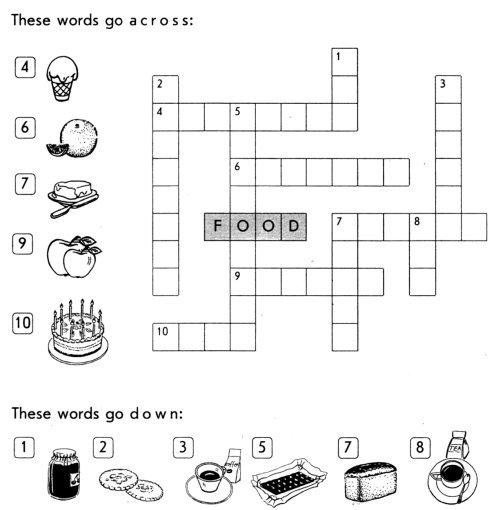


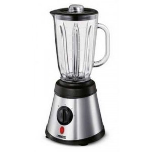
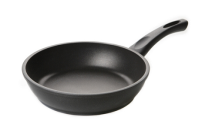
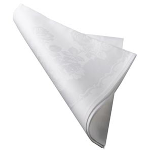
………………………………….. ……………………………………….. ……………………………………………..
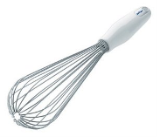
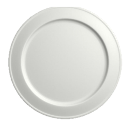
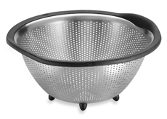
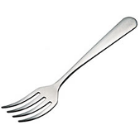
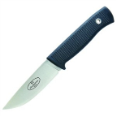 ……………………………….. ……………………………………….. ...…………………………………..
……………………………….. ……………………………………….. ...…………………………………..
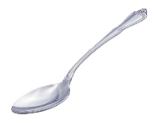
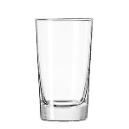 ……………………………….. ……………………………………….. ………………………………………..
……………………………….. ……………………………………….. ………………………………………..
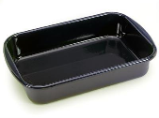
…………………………………………….. ……………………………………………..
1. What is your favorite bread? – put the numbers from 1 (I love) to 8 (I dislike/hate).
croissant
tortilla
pizza bread
toast
fried bread
pita bread
white bread
brown bread
2. Complete with missing letters – kinds of bread.
_ult_ _ ra _ n br_ _ _
c _ i_p_ rea _
w_ it _ _ re_ d
ho_e - _ ad_ _rea_
ye_s_ c_ke
wh_ l _ me _l br_ _d
_ _own b_ea_
3. What kind of bread is it?
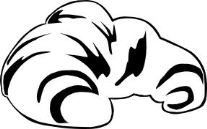
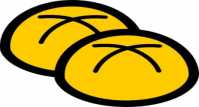
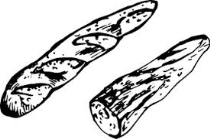
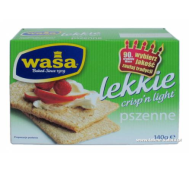
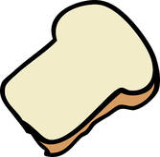
4. Work in pairs – ask and answer the questions.
What kind of bread do you like?
What is your favorite sandwich ?
Do you sometimes eat stale bread?
Can you make bread (with mom's/grandma's help)?
How often do you eat bread?
5. Write the names of the crops.
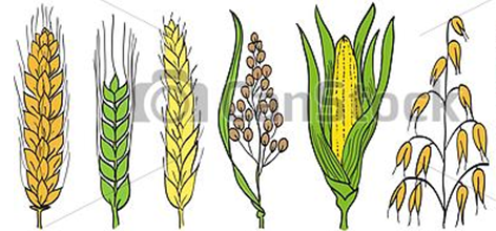
……….. ……… ……… ………. ………. ………….
6. Write what you see in the picture and draw other things you can find in a bakery.
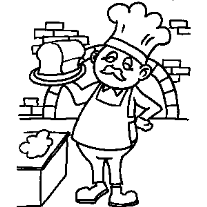



 FIND THE VOCABULARY RELATED TO FOOD IN THE PUZZLE
FIND THE VOCABULARY RELATED TO FOOD IN THE PUZZLE
![]()
![]()

![]()
![]()


|
S |
T |
F |
R |
E |
N |
C |
H |
F |
R |
I |
E |
S |
B |
A |
|
T |
E |
T |
R |
S |
E |
C |
O |
D |
N |
O |
M |
E |
L |
N |
|
R |
R |
R |
W |
V |
D |
O |
T |
C |
Z |
V |
N |
F |
N |
B |
|
A |
V |
O |
C |
A |
D |
O |
D |
C |
C |
T |
B |
N |
B |
A |
|
W |
S |
W |
R |
P |
L |
K |
O |
N |
I |
O |
N |
O |
N |
|
|
|
E |
E |
F |
P |
P |
I |
G |
W |
S |
M |
W |
L |
M |
A |
|
E |
A |
S |
F |
L |
P |
E |
S |
S |
D |
A |
W |
E |
M |
N |
|
R |
S |
E |
H |
E |
L |
S |
A |
D |
E |
T |
X |
M |
O |
|
|
R |
D |
L |
S |
O |
U |
P |
Z |
C |
E |
O |
C |
R |
Q |
D |
|
Y |
S |
P |
P |
P |
P |
S |
Z |
E |
F |
D |
V |
E |
S |
D |
|
E |
L |
P |
P |
A |
E |
N |
I |
P |
F |
E |
V |
T |
Z |
G |
|
|
T |
A |
S |
L |
S |
E |
P |
F |
O |
W |
B |
A |
U |
|
|
W |
R |
G |
R |
A |
P |
E |
S |
D |
C |
S |
A |
W |
J |
N |
|
E |
R |
I |
C |
E |
R |
C |
R |
C |
H |
I |
C |
K |
E |
N |
|
R |
T |
I |
S |
R |
C |
C |
I |
C |
E |
C |
R |
E |
A |
M |


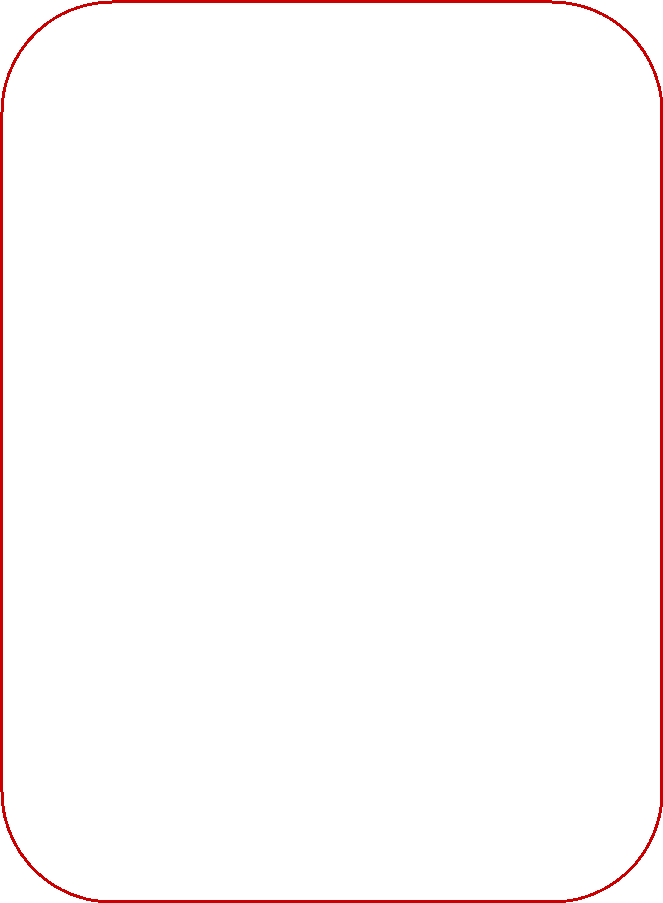

|
A |
B |
A |
N |
A |
N |
A |
f |
B |
R |
E |
A |
D |
P |
E |
H |
C |
N |
I |
C |
|
P |
T |
n |
O |
s |
A |
C |
S |
U |
P |
k |
y |
o |
g |
h |
u |
r |
T |
h |
A |
|
P |
v |
j |
U |
a |
F |
M |
V |
T |
p |
o |
t |
a |
t |
o |
f |
d |
i |
A |
U |
|
L |
i |
a |
N |
l |
I |
R |
H |
T |
U |
n |
a |
u |
I |
A |
L |
c |
A |
L |
L |
|
E |
n |
m |
I |
a |
E |
P |
j |
E |
L |
B |
S |
r |
E |
L |
k |
A |
V |
l |
I |
|
s |
e |
F |
R |
d |
S |
C |
A |
R |
R |
O |
T |
l |
N |
e |
F |
L |
e |
e |
F |
|
ñ |
g |
j |
O |
t |
h |
e |
h |
s |
T |
L |
Z |
e |
n |
p |
L |
E |
g |
t |
L |
|
L |
a |
C |
H |
e |
G |
r |
y |
e |
G |
L |
V |
m |
O |
e |
O |
S |
n |
t |
O |
|
a |
r |
O |
r |
n |
U |
e |
N |
A |
e |
A |
J |
o |
E |
a |
R |
u |
a |
u |
W |
|
d |
p |
r |
R |
i |
S |
a |
A |
D |
C |
s |
S |
n |
l |
c |
b |
g |
r |
c |
E |
|
f |
y |
X |
W |
s |
A |
l |
I |
A |
O |
U |
e |
f |
k |
h |
g |
A |
o |
e |
R |
|
E |
L |
Y |
A |
i |
I |
s |
P |
i |
n |
e |
a |
p |
p |
l |
e |
r |
q |
w |
e |
|
T |
V |
M |
X |
a |
T |
u |
r |
A |
S |
I |
A |
d |
r |
a |
t |
s |
u |
M |
r |
|
A |
o |
j |
a |
R |
A |
e |
S |
n |
N |
t |
o |
m |
a |
t |
o |
y |
f |
e |
t |
|
L |
Ñ |
I |
P |
E |
b |
B |
o |
A |
F |
N |
A |
p |
a |
s |
t |
a |
A |
a |
c |
|
O |
C |
H |
f |
m |
A |
i |
N |
E |
ñ |
O |
P |
e |
A |
E |
U |
r |
T |
t |
i |
|
C |
A |
i |
u |
N |
n |
A |
w |
i |
n |
e |
J |
A |
L |
A |
Q |
i |
A |
P |
l |
|
O |
s |
c |
C |
O |
L |
i |
v |
E |
z |
H |
L |
r |
P |
T |
R |
c |
T |
o |
r |
|
H |
u |
E |
A |
O |
E |
p |
e |
p |
p |
e |
r |
i |
o |
p |
N |
e |
i |
B |
a |
|
C |
S |
T |
R |
A |
W |
B |
E |
R |
R |
Y |
N |
p |
u |
o |
s |
L |
P |
N |
g |
|
apple |
chocolate |
olive |
rice |
|
banana |
cucumber |
onion |
salad |
|
bread |
fish |
orange |
soup |
|
butter |
garlic |
pasta |
strawberry |
|
carrot |
jam |
peach |
sugar |
|
cauliflower |
lemon |
pear |
tomato |
|
cereals |
lettuce |
pepper |
tuna |
|
cheese |
meat |
pineapple |
vinegar |
|
|
mustard |
potato |
|
|
chicken |
oil |
raisin |
yoghurt |
Словник
|
|
|
|
|
Kinds of Food |
||
|
nourishing (adj.) |
food that is nourishing makes you strong and healthy |
поживна |
|
nutritional value |
the importance or usefulness food that help you to stay healthy |
харчова цінність |
|
cuisine |
a particular style of cooking |
кухня |
|
famine |
a situation in which a large number of people have little or |
голод |
|
|
no food for a long time and many people die |
|
|
gluttony |
the bad habit of eating and drinking too much |
обжерливість |
|
fatty food |
containing a lot of fat |
жирна їжа |
|
high/medium-fat |
containing much or average amount of fat |
вис./сер. жирності |
|
fattening (adj.) |
likely to make you fat |
жирна |
|
vegetarian |
someone who does not eat meat or fish |
вегетаріанець |
|
vegan |
someone who does not eat any animal products at all, |
строгий |
|
|
such as meat, fish, eggs, cheese, or milk |
вегетаріанець |
|
potluck |
a meal in which everyone who is invited brings something to eat |
спільний стіл |
|
|
one of several natural substances that exist in food |
|
|
protein |
such as meat, eggs, and beans, and which your body |
білок |
|
|
needs in order to grow and remain strong and healthy |
|
|
a snack |
a small amount of food that is eaten between main meals |
легка закуска |
|
|
or instead of a meal |
|
|
to have a snack |
to eat a small amount of food |
перекусити |
|
to bite |
to use your teeth to cut, crush, or chew something |
кусати |
|
to get a bite |
to have a short meal |
перекусити |
|
to chew |
to bite food several times before swallowing it |
жувати |
|
to consume |
to eat or drink something |
пити/їсти |
|
to take in |
to provide oneself with some extra food |
запасатися |
|
fast food |
food such as hamburgers which is prepared quickly and |
швидка їжа |
|
|
that you can take away with you |
|
|
junk food |
food that is not healthy, for example because it contains |
нездорова їжа |
|
|
a lot of fat, sugar etc |
|
|
ethnic food |
food from countries that are far away, which seems |
національні |
|
|
very different and unusual |
страви |
|
health food |
food that contains only natural substances, and that is |
здорова їжа |
|
|
good for your health |
|
|
to be thirsty |
to feel that you want or need a drink |
бути спраглим |
|
to starve |
to suffer or die because you do not have enough to eat |
голодати |
|
to be fed up |
to be annoyed or bored, and wanting something to change |
бути ситим по горло |
|
to gulp down |
to swallow large quantities of food or drink quickly |
жлуктати |
|
to polish off |
to finish food quickly or easily |
швидко поїсти |
|
take away food |
if you buy food to take away, you buy cooked food from |
їжа на винос |
|
|
a restaurant and take it outside to eat it somewhere else |
|
|
meals-on-wheels |
a service run by the government in Britain in which hot meals |
доставка їжі бідним |
|
|
are taken to old or sick people in their homes |
на дом |
|
processed food |
processed food has substances added to it before it is sold, |
оброблена |
|
|
in order to preserve it, improve its colour etc |
|
|
|
|
|
|
|
|
|
|
Shopping |
||
|
confectionery |
sweets, chocolates etc |
солодощі |
|
delicatessen |
a shop that sells high quality cheeses, salads, meats etc |
гастрономія |
|
candy |
a sweet food made from sugar or chocolate |
цукерка |
|
ice cream |
a frozen sweet food made of milk, cream, and sugar, with fruit, |
морозиво |
|
|
nuts, chocolate etc sometimes added to it |
|
|
vanilla (adj.) |
having the taste of vanilla |
ванільний |
|
chocolate bar |
a small block of chocolate |
шоколадка |
|
baker's / bakery |
a place where bread and cakes are baked, or a shop |
булочна |
|
|
where they are sold |
|
|
flour |
a powder that is made by crushing wheat or other grain and |
мука |
|
|
is used for making bread, cakes etc |
|
|
biscuit |
a small thin dry cake that is usually sweet and made for |
печиво |
|
|
one person to eat |
|
|
pastry |
a mixture of flour, butter, and milk or water, used to make |
тісто |
|
|
the outer part of baked foods such as pies |
|
|
puff pastry |
light pastry with a soft mixture inside |
листкове тісто |
|
roll |
a small round loaf of bread for one person |
булочка, рулет |
|
scone |
a small round cake, sometimes containing dried fruit, |
коржик |
|
|
which is usually eaten with butter |
|
|
shortbread |
a hard, sweet biscuit made with a lot of butter |
пісочне печиво |
|
sponge cake |
a light cake made from flour, sugar, butter and eggs |
бісквіт |
|
gingerbread |
a heavy sweet cake or a biscuit with ginger in it |
імбірний пряник |
|
wholemeal bread |
wholemeal bread uses all of the grain, including the outer layer |
висівковий хліб |
|
stale bread |
bread or cake that is stale is no longer fresh or good to eat |
черствий хліб |
|
bun |
a small round type of bread |
булочка |
|
buckwheat |
a type of small grain used as food for chickens, |
гречка |
|
|
and for making flour |
|
|
beverage |
a hot or cold drink |
напій |
|
beer |
an alcoholic drink made from malt and hops |
пиво |
|
strawberry |
a soft red juicy fruit with small seeds on its surface, or the plant |
полуниця |
|
|
that grows this fruit |
|
|
bean |
a seed or a pod (=case containing seeds) , that comes from |
боб |
|
|
a climbing plant and is cooked as food |
|
|
wine |
an alcoholic drink made from grapes, or a type of this drink |
вино |
|
cocktail |
an alcoholic drink made from a mixture of different drinks |
коктейль |
|
eggnog |
a drink made from eggs, sugar, milk, and alcohol, |
напій зі збитих яєць |
|
|
usually drunk at Christmas |
|
|
coffee |
a hot dark brown drink that has a slightly bitter taste |
кава |
|
juice |
the liquid that comes from fruit and vegetables, or a drink |
сік |
|
|
that is made from this |
|
|
alcoholic drinks |
relating to alcohol or containing alcohol |
алкогольні напої |
|
soft drinks |
a cold drink that does not contain alcohol |
безалкогольні напої |
|
greengrocery |
a shop selling fruit and vegetables |
овочевий магазин |
|
fruit |
something that grows on a plant, tree, or bush, can be eaten |
фрукт |
|
|
as a food, contains seeds or a stone, and is usually sweet |
|
|
vegetable |
a plant that is eaten raw or cooked, such as a cabbage |
овоч |
|
apricot |
a small round orange or yellow fruit that has a single large seed |
абрикос |
|
blackberry |
a small black or purple berry from a bush that has thorns |
смородина |
|
cherry |
a small round red or black fruit with a long thin stem and |
вишня |
|
|
a stone in the middle |
|
|
|
the large brown seed of a tropical tree, which has a hard shell |
|
|
coconut |
containing white flesh that you can eat and a milky liquid |
кокос |
|
|
that you can drink |
|
|
currant |
a small dried grape used especially in baking cakes |
родзинка |
|
grape |
one of a number of small round green or purple fruits |
виноград |
|
|
that grow together on a vine |
|
|
lime |
a small juicy green fruit with a sour taste |
лайм |
|
melon |
a large round fruit with sweet juicy flesh |
диня |
|
orange |
a round fruit that has a thick orange skin and is |
апельсин |
|
|
divided into parts inside |
|
|
peach |
a round juicy fruit that has a soft yellow or red skin and a large, |
персик |
|
|
hard seed in the centre, or the tree that this fruit grows on |
|
|
pear |
a sweet juicy fruit that has a round base and is thinner |
груша |
|
|
near the top, or the tree that produces this fruit |
|
|
pineapple |
a large yellow-brown tropical fruit or its sweet juicy yellow flesh |
ананас |
|
plum |
a small round juicy fruit which is dark red, purple, or yellow and |
слива |
|
|
has a single hard seed, or the tree that produces this fruit |
|
|
raspberry |
a soft sweet red berry, or the bush that this berry grows on |
малина |
|
Brussels sprout |
a small round green vegetable that looks like a small cabbage |
брюсельська капуста |
|
cabbage |
a large round vegetable with thick green or purple leaves |
капуста |
|
carrot |
a long pointed orange vegetable that grows under the ground |
морква |
|
cauliflower |
a vegetable with green leaves around a firm white centre |
цвітна капуста |
|
celery |
a vegetable with long pale green stems that you can eat cooked |
сельдерей |
|
|
or uncooked |
|
|
dill |
a type of herb |
кріп |
|
garlic |
a plant like a small onion, used in cooking to give a strong taste |
часник |
|
lettuce |
a round vegetable with thin green leaves eaten raw in salads |
салат-латук |
|
radish |
a small vegetable whose red or white root is eaten raw and |
редис |
|
|
has a strong spicy taste |
|
|
mushroom |
one of several kinds of fungus with stems and round tops, |
гриб |
|
|
some of which can be eaten |
|
|
onion |
a round white vegetable with a brown, red, or white skin |
лук |
|
|
and many layers |
|
|
paprika |
a red powder made from a type of sweet pepper, used for |
паприка |
|
|
giving a slightly hot taste to meat and other food |
|
|
parsley |
a curly-leaved herb, used in cooking or as decoration on food |
петрушка |
|
pea |
a round green seed that is cooked and eaten as a vegetable, |
горошок |
|
|
or the plant on which these seeds grow |
|
|
spinach |
a vegetable with large dark green leaves |
шпінат |
|
squash |
one of a group of large vegetables with solid flesh and |
гарбуз |
|
|
hard skins, such as pumpkins |
|
|
butcher's |
a shop where you can buy meat |
м’ясний магазин |
|
frozen food |
frozen food has been stored at a very low temperature |
заморожена їжа |
|
|
in order to preserve it |
|
|
veal |
the meat of a calf (=a young cow) |
телятина |
|
venison |
the meat of a deer |
оленина |
|
meat |
the flesh of animals and birds eaten as food |
м’ясо |
|
poultry |
meat from birds such as chickens and ducks |
птиця |
|
beef |
the meat from a cow |
яловичина |
|
chicken |
the meat from this bird eaten as food |
курятина |
|
duck |
the meat of a duck used as food |
утятина |
|
goose |
the cooked meat of this bird |
гусятина |
|
ham |
the upper part of a pig's leg, or the meat from this that has been |
окорок |
|
|
preserved with salt or smoke |
|
|
kidney |
one of the two organs in animals lower back used as food |
нирка |
|
lamb |
the meat of a young sheep |
молода баранина |
|
liver |
a large organ in animals body used as food |
печінка |
|
pork |
the meat from pigs |
свинина |
|
lard |
white fat from pigs that is used in cooking |
сало |
|
turkey |
the meat from a turkey eaten as food |
індичатина |
|
fishmonger's |
a shop that sells fish |
рибний магазин |
|
seafood |
animals from the sea that you can eat, for example shellfish |
морепродукти |
|
cod |
the white flesh of a cod, eaten as food |
тріска |
|
haddock |
a fish that lives in northern seas and is often used as food |
пікша |
|
herring |
a long thin silver sea fish that can be eaten |
сельдь |
|
mackerel |
a sea fish that has oily flesh and a strong taste |
скумбрія |
|
oysters |
a type of shellfish that can be eaten cooked or uncooked, |
устриця |
|
|
and that produces a jewel called a pearl |
|
|
prawn |
a small pink shellfish that can be eaten |
креветка |
|
shrimp |
a small sea creature that you can eat, which has ten legs |
креветка |
|
|
and a soft shell |
|
|
salmon |
a large fish with silver skin and pink flesh that lives in the sea |
лосось |
|
|
but swims up rivers to lay its eggs and is often eaten as food |
|
|
trout |
a common river-fish, often used for food, or the flesh of this fish |
форель |
|
tuna |
a large sea fish caught for food |
тунець |
|
lobster |
a sea animal with eight legs, a shell, and two large claws |
лобстер |
|
dairy products |
milk, butter, cheese etc |
молочні продукти |
|
cottage cheese |
soft white cheese made from sour milk |
сир (творог) |
|
cream cheese |
a type of soft white smooth cheese |
вершковий сир |
|
skim (med) milk |
milk that has had all the fat and cream removed from it |
знежирене молоко |
|
yoghurt |
a thick liquid food that tastes slightly sour and is made from |
йогурт |
|
|
milk, or an amount of this food |
|
|
sour cream |
cream that has been made thicker by adding a type of bacteria |
кисле молоко |
|
margarine |
a yellow substance similar to butter but made from vegetable |
маргарин |
|
|
or animal fats, which you eat with bread or use for cooking |
|
|
|
|
|
|
|
|
|
|
Restaurant |
||
|
menu |
a list of all the kinds of food that are available for a meal |
меню |
|
a la carte |
if food is à la carte, each dish has a separate price |
порційна |
|
starter |
a small amount of food eaten at the start of a meal before |
закуска |
|
|
the main part |
|
|
appetizer |
a small dish that you eat at the beginning of a meal |
закуска |
|
main course |
the main part of a meal |
основні страви |
|
dessert |
sweet food served after the main part of a meal |
десерт |
|
tasty |
food that is tasty has a good taste, but is not sweet |
смачна |
|
appetite |
a desire for food |
апетит |
|
aftertaste |
a taste that stays in your mouth after you have eaten |
привкус |
|
|
or drunk something |
|
|
delicious |
very pleasant to taste or smell |
дуже смачна |
|
dish |
food cooked or prepared in a particular way as a meal |
страва |
|
high tea |
a meal of cold food, cakes etc eaten in the early evening |
вечеря |
|
regular meals |
meals with the same amount of time in between |
регулярне харчування |
|
lunch |
a meal eaten in the middle of the day |
другий сніданок |
|
headwaiter |
the person in charge of a group of waiters |
метрдотель |
|
to order |
to ask for food or a drink in a restaurant, bar etc |
замовити |
|
to serve |
to give someone food or drink, especially as part of a meal or |
обслуговувати |
|
|
in a restaurant, bar etc |
|
|
to have a second |
to have the second amount of food that someone gives you |
мати добавку |
|
helping |
or that you take |
|
|
to help oneself |
to offer sb taking some of what they want, without |
пропонувати |
|
to sth |
asking permission - used especially when offering food |
|
|
diner |
someone who is eating |
той, хто їсть |
|
to eat out |
to eat in a restaurant instead of at home |
їсти не вдома |
|
to go Dutch |
to share the cost of a meal in a restaurant |
ділити витрати |
|
chef |
a skilled cook, especially the main cook in a hotel or restaurant |
шеф-повар |
|
|
|
|
|
|
|
|
|
Cooking & Diet |
||
|
to be on a diet |
to have a limited range and amount of food that you eat |
бути на дієті |
|
|
when you want to get thinner |
|
|
to slave over |
to cook very hard with little time to rest |
багато готувати |
|
a hot stove |
|
|
|
bacon and eggs |
eggs fried in a pan with bacon (usually eaten for breakfast) |
яєчня з беконом |
|
barbecue |
a meal or party during which food is cooked on a metal frame |
шашлики |
|
|
over a fire and eaten outdoors |
|
|
meat loaf |
meat that has been cut into very small pieces, |
буженина |
|
|
pressed together, and baked |
|
|
sausage |
a small tube of skin filled with a mixture of meat, spices etc, |
сосиска |
|
|
eaten hot or cold after it has been cooked |
|
|
yolk |
the yellow part in the centre of an egg |
жовток |
|
steak |
good quality beef, or a large thick piece of any |
вирізка |
|
|
good quality red meat |
|
|
to season |
to add salt, pepper etc to food you are cooking |
заправляти |
|
to stuff |
to fill a chicken, pepper etc with a mixture of bread or rice, |
шпигувати |
|
|
onion etc before cooking it |
|
|
to whip |
to mix cream or the clear part of an egg very hard |
збивати |
|
|
until it becomes stiff |
|
|
to marinate |
to put meat or fish in a marinade, or to be left in |
маринувати |
|
|
a marinade for some time |
|
|
to grate |
to rub cheese, vegetables etc against a rough or sharp surface |
терти |
|
|
in order to break them into small pieces |
|
|
seasoning |
salt, pepper, spices etc that give food a more interesting taste |
приправи |
|
condiment |
a powder or liquid, such as salt or ketchup, that you use |
приправа |
|
|
to give a special taste to food |
|
|
sauce |
a thick cooked liquid that is served with food to give it |
соус |
|
|
a particular taste |
|
|
jacket potato |
a potato baked with its skin on |
запечена картопля |
|
ravioli |
small pasta squares filled with meat or cheese |
пельмені равіолі |
|
dough |
a mixture of flour and water ready to be baked into |
тісто |
|
|
bread, pastry etc |
|
|
doughnut |
a small round cake, often in the form of a ring |
пончик |
|
batter |
a mixture of flour, eggs, milk etc, used in cooking |
рідке тісто |
|
|
and for making bread, cakes etc |
|
|
cereal |
a breakfast food made from grain and usually eaten with milk |
каша |
|
noodles |
long thin pieces of food made from a mixture of flour, water, |
локшина |
|
|
and eggs, usually cooked in soup or boiling water |
|
|
pasta |
an Italian food made from flour, eggs, and water |
паста (макаронні |
|
|
and cut into various shapes, usually eaten with a sauce |
вироби) |
|
macaroni |
a type of pasta in the shape of small tubes |
макарони |
|
tart |
a pie without a top on it, containing something sweet |
тістечко |
|
apple-pie |
apples baked inside a pastry covering |
яблучний пиріг |
|
toast |
bread that has been heated so that it is brown on both sides |
тост |
|
|
and no longer soft |
|
|
pizza |
a food made of thin flat round bread, baked with tomato, |
піца |
|
|
cheese, and sometimes vegetables or meat on top |
|
|
hamburger |
a flat round piece of finely cut beef which is cooked |
гамбургер |
|
|
and eaten in a bread bun |
|
|
submarine |
growing under the sea |
водорості |
|
sandwich |
two pieces of bread with cheese, meat, vegetables, |
бутерброд |
|
|
cooked egg, etc between them |
|
|
pudding |
a hot/cold sweet dish, made from cake, rice, bread etc |
пудінг |
|
|
with fruit, milk or other sweet things added |
|
|
pancake |
a thin flat round cake made from flour, milk, and eggs, |
млинець |
|
|
that has been cooked in a flat pan and is eaten hot |
|
|
to bake |
to cook something using dry heat, in an oven |
пекти |
|
to blend |
to thoroughly mix together soft or liquid substances |
перемішувати |
|
|
to form a single smooth substance |
|
|
to boil |
to cook something in boiling water |
варити |
|
to casserole |
to cook food in a casserole (a deep covered dish used for |
запікати |
|
|
cooking food in an oven) |
|
|
to stew |
to cook something slowly in liquid |
тушкувати |
|
to chop |
to cut something into smaller pieces |
нарізати |
|
to cook |
to prepare food for eating by using heat |
готувати |
|
|
if you grill something, or if it grills, you cook it by putting it |
|
|
to grill |
on a flat metal frame with bars across it, |
підсмажити |
|
|
above or below strong direct heat |
|
|
to mash |
to crush food that has been cooked until it is soft and smooth |
м’яти |
|
to peel |
to remove the skin from fruit or vegetables |
обчищати |
|
to roast |
to cook something, such as meat, in an oven or over a fire, |
смажити |
|
|
or to cook in this way |
|
|
to simmer |
to boil gently, or to cook something slowly by boiling it gently |
проварювати |
|
to steam |
to cook something in steam (the hot mist that water produces |
пропарювати |
|
|
when it is boiled) |
|
|
dressing |
a mixture of liquids, usually oil and vinegar, |
приправа |
|
|
that you put on salad or raw vegetables |
|
|
gravy |
a sauce made from the juice that comes from meat |
підлива |
|
|
as it cooks, mixed with flour and water |
|
|
mayonnaise |
a thick white sauce, made of raw egg yolks and oil, |
майонез |
|
|
often eaten on sandwiches or salad |
|
|
mustard |
a yellow sauce with a strong taste, eaten especially with meat |
гірчиця |
|
catsup/ketchup |
a thick cold red tomato sauce that you put on food |
кетчуп |
|
herbs |
small plants that are used to improve the taste of food |
трави |
|
spices |
a type of powder or seed, taken from plants, that you |
спеції |
|
|
put into food you are cooking to give it a special taste |
|
|
spicy |
food that is spicy has a pleasantly strong taste, |
гостра |
|
|
and gives you a pleasant burning feeling in your mouth |
|
|
pepper |
a powder that is used to add a hot taste to food |
перець |
|
chilli |
a small thin red or green pepper with a very strong hot taste |
перець чілі |
|
cinnamon |
a sweet-smelling brown substance used for giving |
кориця |
|
|
a special taste to cakes and other sweet foods |
|
|
curry |
a spicy Indian sauce |
карі |
|
ginger |
a root with a very strong hot taste, or the powder made |
імбир |
|
|
from this root, that is used in cooking |
|
|
nutmeg |
a brown powder made from the seed of a tropical tree, |
мускат |
|
|
which is used as a spice |
|
|
vinegar |
a sour-tasting liquid made from malt or wine that is used |
оцет |
|
|
to improve the taste of food or to preserve it |
|
|
cookery book |
a book that tells you how to prepare and cook food |
куховарська книга |
|
edible |
can be eaten |
їстівний |
|
eatable |
in a good enough condition to be eaten |
їстівний |
|
deep fried |
cooked under the surface of hot fat or oil |
смажений в олії |
|
overcook |
to cook food for too long |
переготувати |
|
undercook |
to cook food for not long enough |
недоготувати |
|
rare / medium / |
meat that is rare has only been cooked for a short time and |
недоготоване / |
|
well done |
is still red / meat that is medium or medium rare is |
майже готове / |
|
|
partly cooked but still slightly pink inside / meat that is well-done |
готове |
|
|
has been cooked thoroughly |
|
|
hard-boiled eggs |
a hard-boiled egg has been boiled until it becomes solid |
круто зварені яйця |
|
soft-boiled eggs |
an egg that is soft-boiled is boiled long enough for the white part |
рідко зварені яйця |
|
|
to become solid, but the yellow part in the centre is still liquid |
|
|
scrambled eggs |
eggs cooked in a pan after the white and yellow parts |
яєчня, омлет |
|
|
have been mixed together |
|
|
hot |
food that tastes hot has a burning taste because it contains |
гостра |
|
|
strong spices |
|
|
ingredient |
one of the foods that you use to make a particular food or dish |
інгридієнт |
|
recipe |
a set of instructions for cooking a particular type of food |
рецепт |
|
bitter |
having a sharp strong taste like black coffee without sugar |
гіркий |
|
sour |
having a sharp acid taste, like the taste of a lemon or a fruit |
кислий |
|
|
that is not ready to be eaten |
|
|
sweet |
containing or having a taste like sugar |
солодкий |
|
|
|
|
|
|
|
|
|
Kitchen |
||
|
dishwasher |
a machine that washes dishes |
посудомийка |
|
sink |
a large open container that you fill with water and use for |
мийка |
|
|
washing yourself, washing dishes etc |
|
|
dishcloth |
a cloth used for washing dishes |
тряпка для посуду |
|
food processor |
a piece of electrical equipment used to prepare food by |
електричний |
|
|
cutting and mixing it |
комбайн |
|
fridge |
a large piece of electrical kitchen equipment, used for |
холодильник |
|
|
keeping food and drinks cool |
|
|
freezer |
a large piece of electrical kitchen equipment in which food |
морозильна камера |
|
|
can be stored at very low temperatures for a long time |
|
|
bin |
a container for putting waste in |
відро для сміття |
|
microwave oven |
a type of oven that cooks food very quickly using very short |
мікрохвильова піч |
|
|
electric waves instead of heat |
|
|
tin opener |
a tool for opening tins of food |
консервний ніж |
|
corkscrew |
a tool made of twisted metal that you use to pull a cork |
штопор |
|
|
out of a bottle |
|
|
chopping board |
a large piece of wood or plastic that you cut meat or |
дошка для |
|
|
vegetables on when you are cooking |
нарізання |
|
breadboard |
a wooden board on which you cut bread |
дошка для |
|
casserole dish |
a deep covered dish used for cooking food in an oven |
нарізання хліба |
|
saucepan |
a deep round metal container with a handle that is |
каструля |
|
|
used for cooking |
|
|
frying pan |
a round flat pan with a long handle, used for frying food |
сковорода |
|
grater |
a tool used for grating food |
терка |
|
carving knife |
a large knife used for cutting large pieces of meat |
ніж для м’яса |
|
meat/coffee grinder |
a machine that cuts meat into very small pieces by forcing it |
м’ясорубка |
|
|
through small holes/a small machine that crushes coffee beans |
кофемолка |
|
electric deep fryer |
an electric big deep pan for frying food |
фритюрниця |
|
peeler |
a knife for removing the skin from fruit or vegetables |
ніж для чищення |
|
food mixer |
a piece of equipment used to mix food |
міксер |
|
kettle |
a container with a lid, a handle, and a spout, used for |
чайник |
|
|
boiling and pouring water |
|
|
teapot |
a container for making and serving tea, which has |
чайник для заварки |
|
|
a handle and a spout |
|
|
blender |
an electric machine that you use to mix liquids and |
блендер |
|
|
soft foods together |
|
|
garlic press |
a tool used to crush garlic |
часникочавилка |
|
stool |
a seat that has three or four legs, but no back or arms |
табурет |
|
|
|
|
|
British English |
American English |
Переклад |
|
crisp |
chips (potato) |
чіпси |
|
pub |
bar, tavern |
паб / бар |
|
grilled |
broiled |
смажена |
|
sweets |
candies |
цукерки |
|
porridge |
oatmeal |
каша |
|
a bill |
a check (in a restaurant) |
рахунок |
|
biscuits |
cookies |
печиво |
|
maize |
corn |
кукурудза |
|
aubergine |
egg-plant |
баклажан |
|
chips |
French fries |
картопля-фрі |
|
dessert trolley |
dessert cart |
корзинка |
|
wash up |
wash dishes |
мити посуд |
|
cooker |
stove |
плита |
|
chopping board |
chopping block |
дошка для нарізання |
|
measuring jug |
measuring cup |
мірний посуд |
|
kettle |
tea kettle |
чайник |
|
tea towel |
dish cloth |
рушник для посуду |
|
can - for drinks |
can for both |
банка |
|
tin - for food |
|
|
|
joint |
roast |
шматок м’яса |
|
minced beef / mince |
hamburger / ground beef |
нарізка |
|
toasted |
grilled |
підсмажена |
|
prawn |
shrimp |
креветка |
|
marrow |
squash |
серцевина |
|
courgettes |
zucchini |
кабачки |
|
beetroot |
beet |
свекла |
|
chinese leaves |
bok choy |
|
|
spring onions |
green onions |
зелена цибуля |
|
treacle |
syrup |
сироп |
|
spirits |
liquor |
спиртне |
|
off-licence / wine merchant |
liqour store |
алкогольний магазин |
|
litre |
liter |
літр |
|
barman |
bartender |
бармен |
|
|
|
|
|
|
|
|
|
Do |
Make |
|
|
|
dinner / tea / coffee / ornlette / a sandwich |
|
|
the cooking |
made of |
|
|
to a turn |
made from |
|
|
|
made with |
|
|
|
reservation |
|
Використана література
http://www.thefreedictionary.com
http://englishwilleasy.com/english-through-pictures/place-english-through-pictures/kitchen-area/
http://ru.freepik.com/free-photos-vectors/fruits
http://www.ikonet.com/en/visualdictionary/food-and-kitchen/kitchen/kitchen-utensils/miscellaneous-utensils.php
http://visual.merriam-webster.com/food-kitchen.php
http://www.infovisual.info/01/051_en.html
http://www.bildwoerterbuch.com/en/food-and-kitchen/food/
http://dictionary.cambridge.org/
http://lingvopro.abbyyonline.com/en
http://dictionary.reference.com/browse/chameleon
http://oald8.oxfordlearnersdictionaries.com/dictionary/tablespoon
http://www.fruitsinfo.com/spring-fruits.html#api
http://englishwell.info/english-lessons/
http://forum.say7.info/topic6024.html
1


про публікацію авторської розробки
Додати розробку

